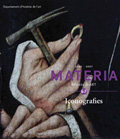The return to beauty according to Arthur C. Danto: politics, ethics and culture.
Abstract
In this study of Arthur Danto's The Abuse of Beauty. Aesthetics and the Concept of Art, we analyze his reflections on beauty as an intellectual journey, reflecting the process by which an analytical philosopher strategically restores beauty to the American artistic and political scene of the 1990s as one of the ways in which human sensitivity expresses itself. The process of "rehabilitating" beauty should be understood as a counter-offensive, aimed at neutralizing the disrespect to which the concept had been subjected at different points in the 20th centurywhat Danto refers to as the "abuse" of beauty by the " intractable" Avant-Garde, from sources including German Dadaism, the Café Voltaire, Tristan Tzara and Marcel Duchamp, and contemporary figures such as Damien Hirst, Andrés Serrano and Paul McCarthy. The conception of beauty as a "value", following the stipulations of Hegel and the two types of beauty-internal and external-he established, is formalized in the Elegies to the Spanish Republic by Robert Motherwell, which Danto considers "emblematic" of a philosophy in which "internal beauty" is contaminated by politics and ethics.Downloads
Published
2009-02-18
Issue
Section
MATERIALS
License
The authors who publish in this journal agree to the following terms:
|  |







